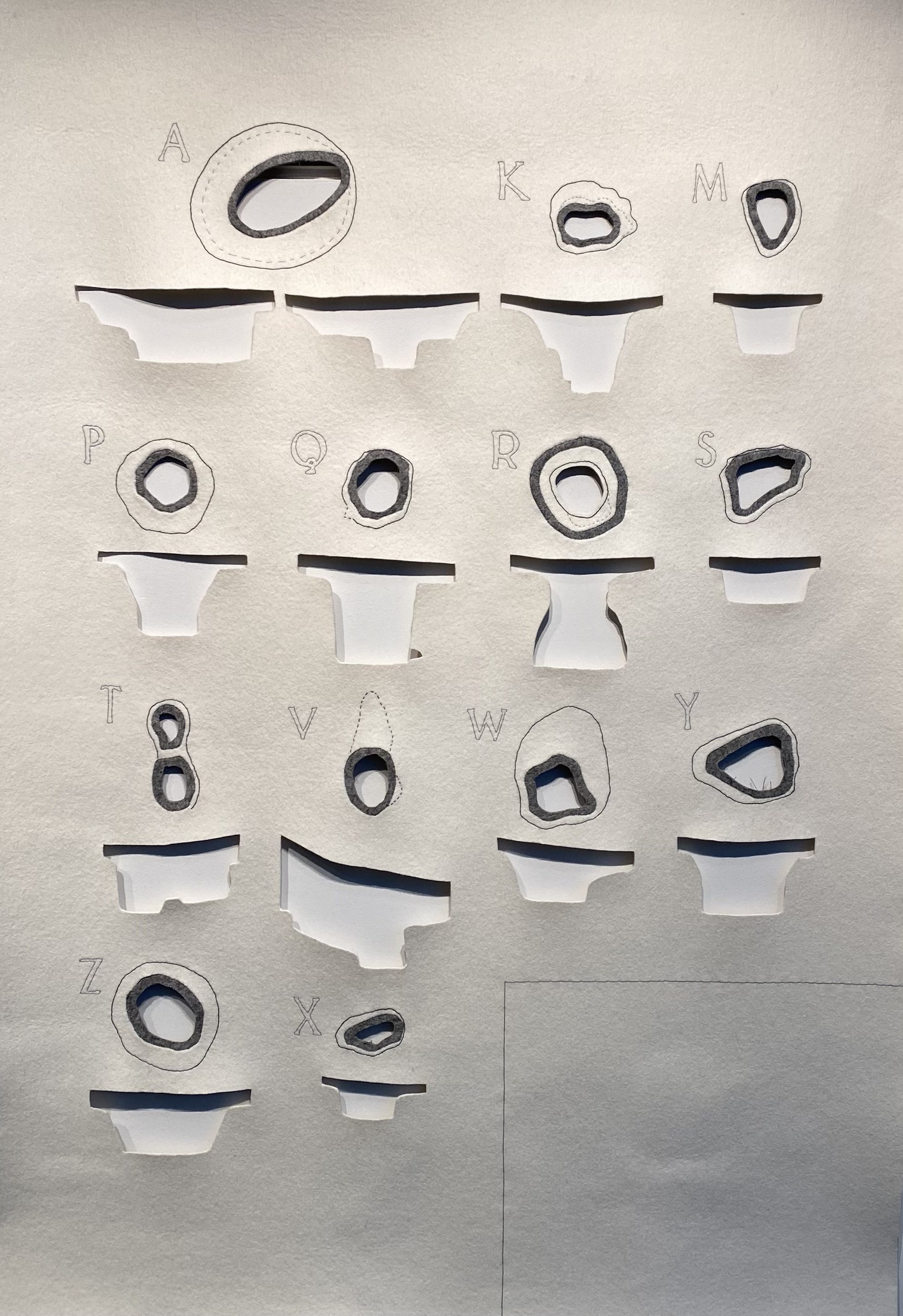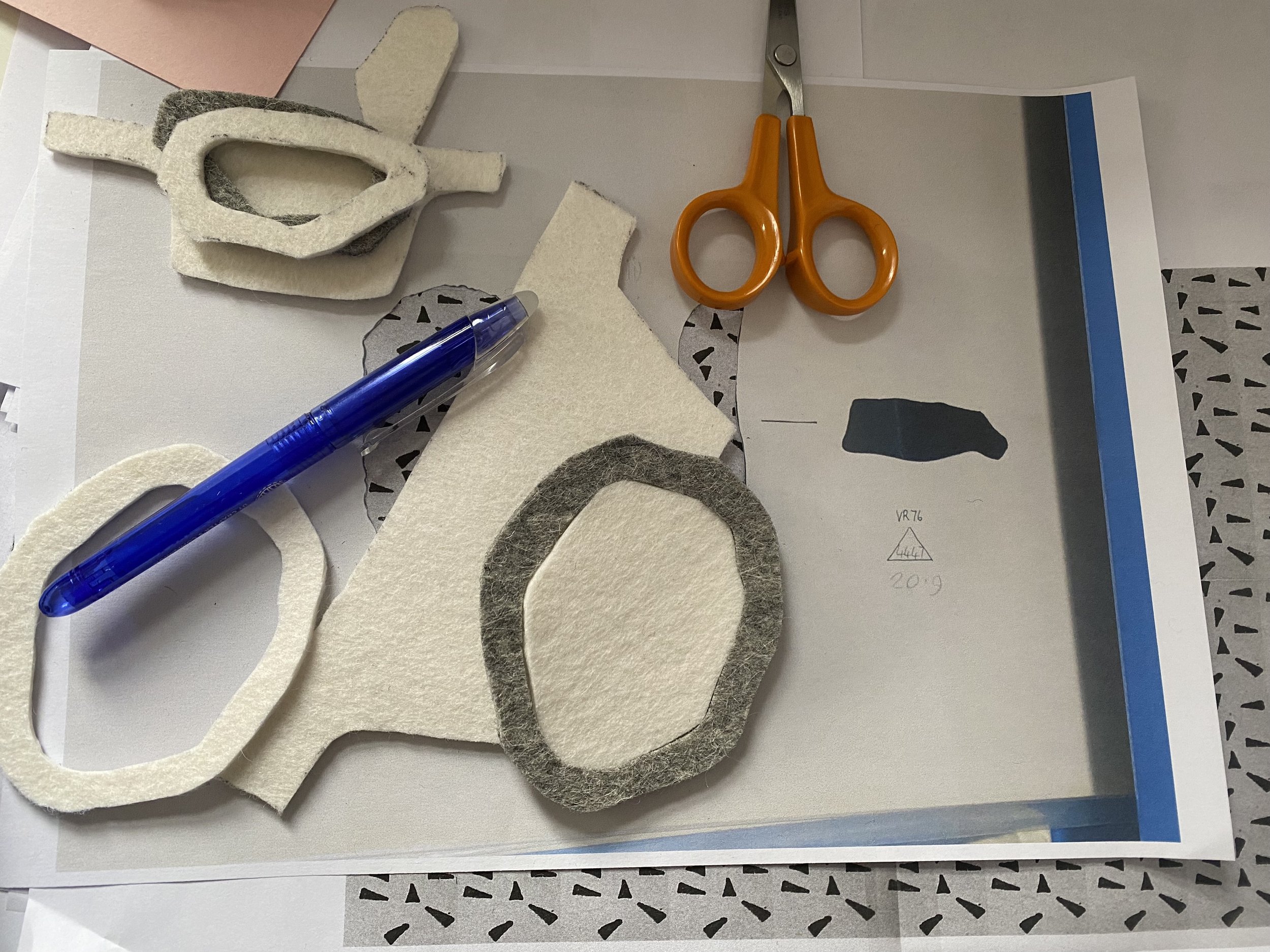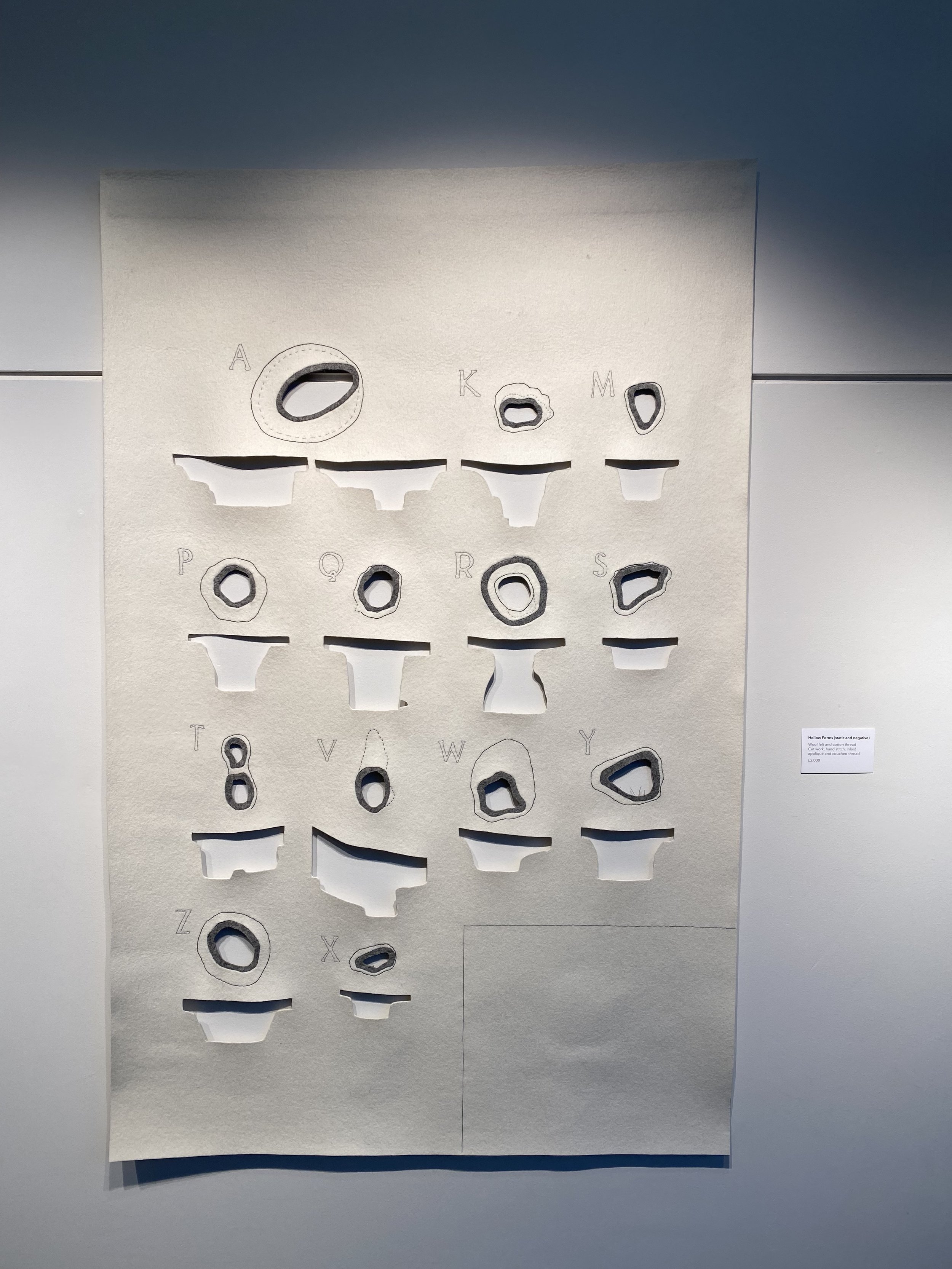1
2
3
4
5
6






Hand cut, hand stitched and inlaid appliqué wool felt
100cm x 153cm
Hollow forms (static and negative) takes the 1920’s archeological survey of the post holes found at St Catherines Hill, Winchester, as its starting point. Curiously, the post holes are identified by a letter, but not then depicted in alphabetical order and with many letters missing. The work draws our attention to the labelling, organising and data sharing aspects of archeological archives, where sometimes human logic can be more confusing than clarifying.
The title Hollow forms (static and negative) comes from the archeological method of identifying activity based not only on what is found in the landscape, but also gaining information from what is missing. Static and negative hollow forms are understood to be created by human interaction with the landscape. In this instance, holes have been dug to sit wooden posts and long after they have biodegraded the holes remains. Even though they are filled with new soil and debris they are still visible to those who know how to look.
what3words: storybook.remain.revisit